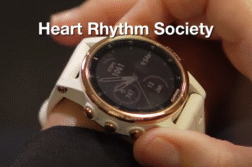NEW YORK, N.Y. (Ivanhoe Newswire) – Congenital heart disease is the most common birth defect in the United States affecting one in every 100 babies. Treatments have advanced to the point where more than 90 percent of CHD babies live into adulthood, but many patients do not seek out the specialized care they need.
Thirty-one- year-old Michael Pernick is a voting rights attorney in New York City. The days can be long and stressful. But …
Pernick said, “I actually feel better than I ever have before.”
For one thing, Pernick is jogging for the first time ever. From birth, he’s been living with a condition known as tetralogy of Fallot, which is a combination of four separate heart abnormalities.
“Within a day or two they rushed me in for emergency open heart surgery. I had a second surgery when I was about a one year old. And a third open heart surgery when I was 22,” Pernick described.
Dr. Ali Zaidi is a CHD specialist at the Adult CHD Center at Mount Sinai Hospital. He says most adult cardiologists are not trained in CHD. In some hospitals, pediatric cardiologists aren’t allowed to see patients over 18. And after years of visiting specialists, many young adults fall through the cracks.
Dr. Zaidi told Ivanhoe, “They’re feeling good. They go to school. They’re getting ready for college. They’re going to get the first job. Why do I need to see somebody? Why do I need somebody for the rest of my life?”
Pernick stopped seeing a specialist when he moved for a new job until a heart valve infection sent him to the ER and then he had a fourth surgery.
Now healthy again, he’s a speaker and advocate for what’s known as transition of care encouraging other young patients to find adult heart specialists- before they need them.
Not every adult CHD patient lives in a metropolitan area, so Pernick recommends checking the directory on the Adult Congenital Heart Association website to find a listing for the nearest clinic. Https://www.achaheart.org/ Dr. Zaidi says it’s important parents encourage their kids and college-age students to follow up with dedicated ACHD care.
Contributors to this news report include: Cyndy McGrath, Producer; Kirk Manson, Videographer; Roque Correa, Editor.
To receive a free weekly e-mail on Medical Breakthroughs from Ivanhoe, sign up at: http://www.ivanhoe.com/ftk
MEDICAL BREAKTHROUGHS
RESEARCH SUMMARY
TOPIC: CHD PROTECTING HEARTS FOR A LIFTETIME
REPORT: MB #4713
BACKGROUND: Congenital heart disease is a defect present at birth. The defects can involve the walls of the heart, the valves of the heart, and the arteries and veins near the heart. They can disrupt the normal flow of blood where it slows down, goes in the wrong direction or to the wrong place, or is completely blocked. Symptoms include a bluish tint to the skin, fingernails, and lips, fast breathing, poor weight gain, lung infections, and being unable to exercise. Children and infants in the past have passed away from congenital heart disease, but with advances in diagnoses and treatment, the babies live well into adulthood. However, adults affected as children can still have issues arise as symptoms.
(Source: https://www.mayoclinic.org/diseases-conditions/adult-congenital-heart-disease/symptoms-causes/syc-20355456)
DIAGNOSIS: Tests should be run, including the electrocardiogram (ECG,) which measures the pace and amount of electrical activity in the heart, an echocardiogram, which measures through sound waves, an exercise stress test, which is conducted by running on a treadmill, a cardiac catheterization, which checks blood flow, a CT scan, which is an x-ray, or a MRI, which uses magnetic field and radio waves to measure the heart.
(Source: https://www.mayoclinic.org/diseases-conditions/adult-congenital-heart-disease/diagnosis-treatment/drc-20355461)
TRANSITION OF CARE: Doctors at Mount Sinai in New York have adopted a Transition of Care for patients of Congenital Heart Disease. Once patients outgrow their pediatricians, they lose contact with medical professionals concerning their defect unless an issue arises, so there is no transition to a doctor that treats adults. Starting at age 15, teens will be able to meet with an adult cardiologist while continuing their time with a pediatrician. Through several visits, the teen patient will discover their condition and develop an individualized plan to enable them to take control of their own health care decisions as they become an adult.
(Source: https://www.mountsinai.org/locations/childrens-heart/services/adult-congenital)
FOR MORE INFORMATION ON THIS REPORT, PLEASE CONTACT:
Ali Zaidi
Ilana Nikravesh
ilana.nikravesh@mountsinai.org
If this story or any other Ivanhoe story has impacted your life or prompted you or someone you know to seek or change treatments, please let us know by contacting Marjorie Bekaert Thomas at mthomas@ivanhoe.com




